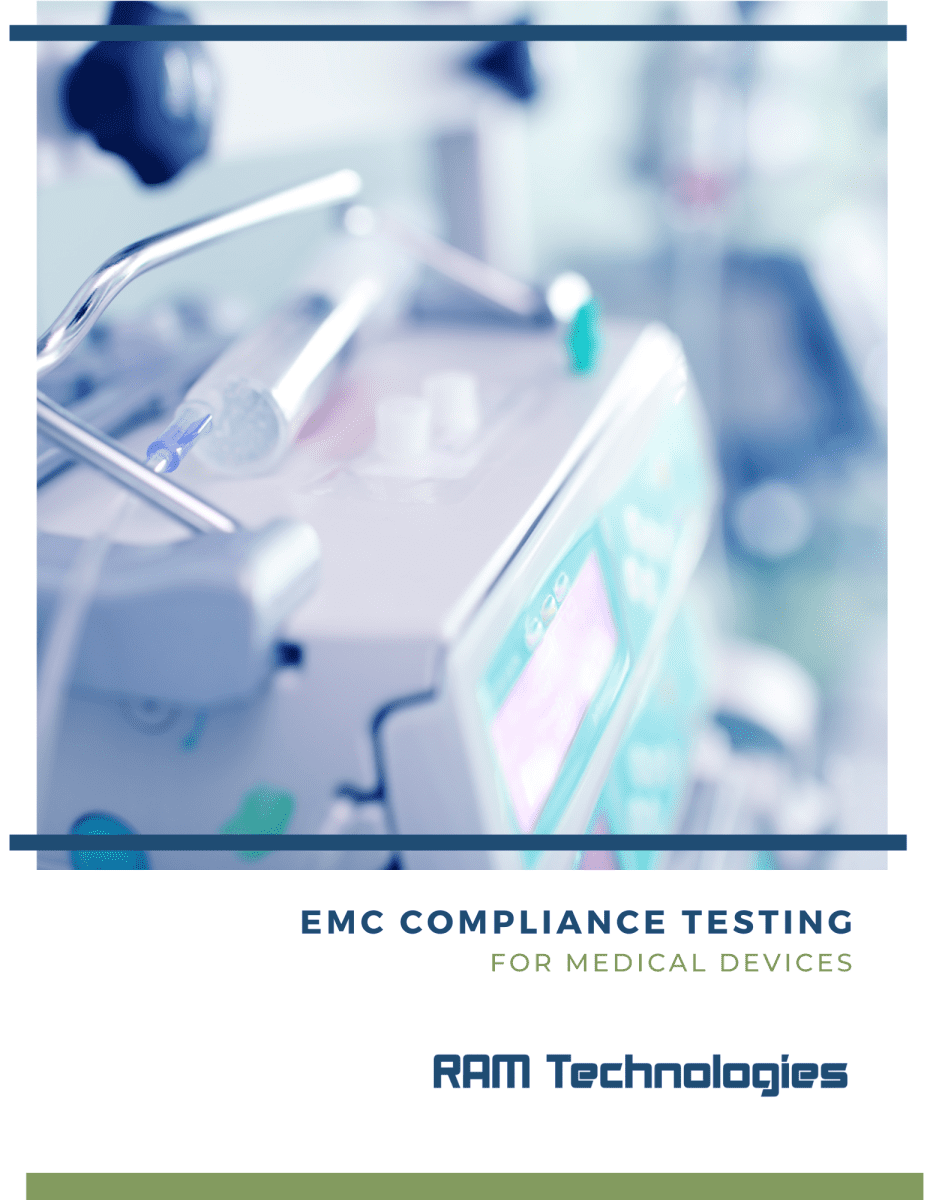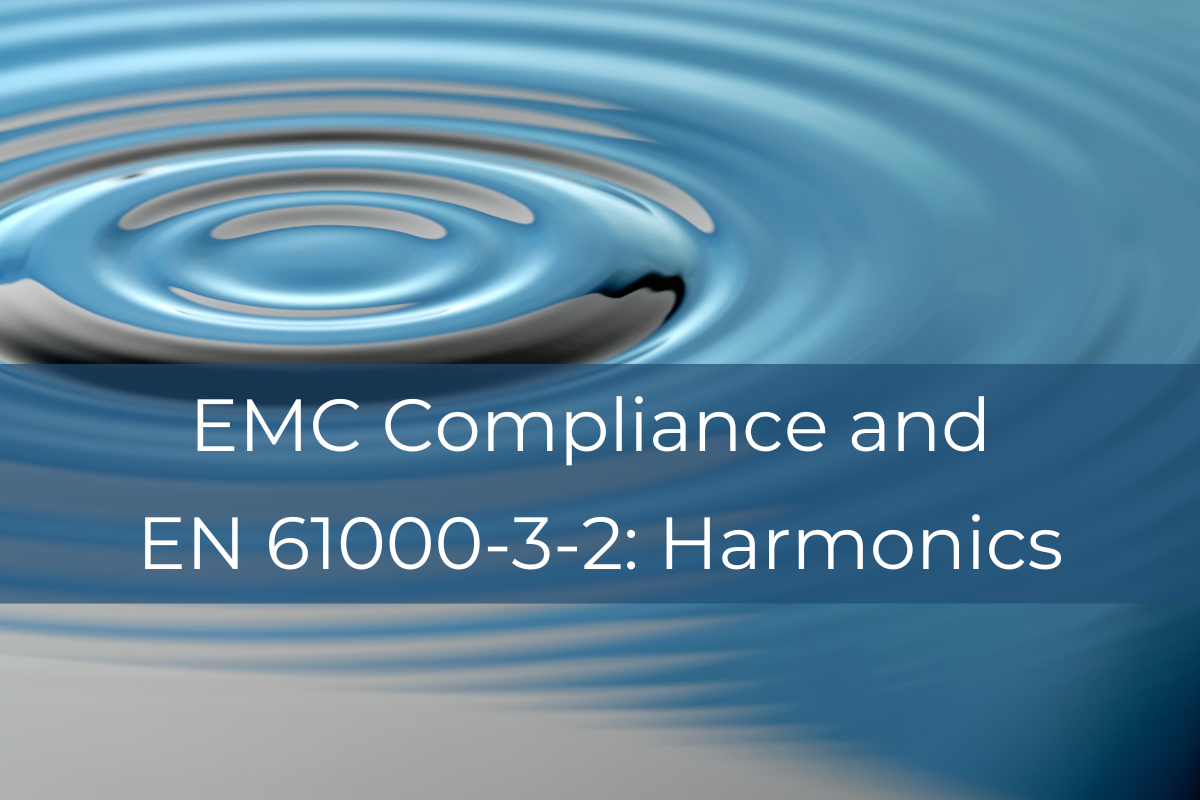One of the essential steps on the road to getting your medical device to market is ensuring it passes all electromagnetic compatibility (EMC) tests. EMC tests, including EN 61000-3-2, verify that the medical devices don’t emit unnecessary or excessive electromagnetic interference (EMI), either through conducted or radiated emissions. Another part of EMC compliance is verifying that your medical device will work even when faced with other electromagnetic phenomena.
This blog will go through the EN 61000-3-2 standard, harmonics, one of the several EMC test standards you may need to comply with.
EN 61000-3-2: Harmonics
Multiples of the fundamental frequency of the power supply (50 or 60 Hz) are known as harmonics. EN 61000-3-2 limits how much harmonic current can be injected into the power supply by a medical device. Harmonics are caused by non-linear loads, including switched-mode power supplies (SMPS) and fluorescent lighting ballasts.
Limits for EN 61000-3-2 depend on the country where medical devices are sold and the type of equipment used, but limits have been established for harmonic currents from the second to the 40th harmonic. The limits are important because the power supply can be at risk of overloading if there are too many harmonic currents. Limits are also in place to prevent interference with other equipment.
IEC 61000-3-2 is a standard that applies to most electrical equipment that is used in homes and businesses. Applicability extends to:
- Electrical equipment connected to the public low-voltage power grid (50Hz or 60Hz, 220/380V, 230/400V, and 240/415V). The limits are still being worked on for systems that have nominal voltages less than 220V (line-to-neutral).
- Electrical equipment using up to 16A of current per phase.
- Non-professional arc welding equipment that uses up to 16A of current per phase.
EN61000-3-2 Classifications
In this harmonics standard, four classes of equipment are defined.
Class A is more of a catch-all category that applies to equipment that hasn’t further been specified as being Class B, C, or D. This category can include household appliances, high-pressure cleaners, audio equipment, and certain tools, for example.
Portable tools and non-professional arc welding equipment fall under Class B.
Lighting equipment is Class C.
Equipment that has power consumption under or equal to 600 W falls under Class D. Personal computers and monitors belong to this category.
IEC 61000-3-2 Limits
Limits don’t apply to all equipment. The following types of equipment are excluded from the standard and do not have to abide by limits established by IEC 61000-3-2:
- Equipment that has a rated power equal or less than 75W (lighting equipment excluded)
- Lighting equipment with a rated power under 5W
- Symmetrically controlled heated elements that have rated power at or under 200W
- Professional equipment with total rated power under 1kW
- Specific independent phase control dimmers
For equipment that does apply, the limits depend on the equipment class and rated power of the devices. You can find out more details on Academy of EMC.
What to know about Compliance with EN 61000-3-2 and PSUSs for Your Medical Device
Medical devices need to pass a number of standards to ensure compliance when headed to market. EMC standards apply to whole medical devices, so individual components like power supply units (PSUs) are not directly tested for compliance. However, at RAM Technologies, we design our units to comply with standards like EN 61000-3-2, allowing you to add our power supplies to your device without worrying about their impact on your compliance.
You can find more information on our downloadable data sheets, available on each power supply page.
RAM Technologies’ power supplies are 60601-1 3.2 certified and meet 60601-1-2 EMC standards. When you’re designing your medical device and need help with a PSU, contact us for details.

Download the EMC Summary
The road to putting your medical device on the market includes many steps, including passing all necessary electromagnetic compatibility (EMC) testing. These tests play an essential role in ensuring your device doesn’t emit a significant amount of electromagnetic interference, which could be via conducted or radiated emissions. Download our guide to EMC compliance to learn more about what medical device manufacturers should consider.
More Resources:
Downloadable Guide to IEC 60601-1
EMC Compliance and EN 61000-4-3: RF Susceptibility
EMC Compliance and EN61000-3-3: Flicker
EMC Compliance and EN 61000-4-2: ESD Level 3
